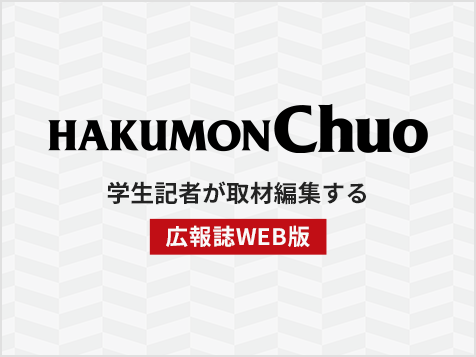社会科学研究所
Management Strategies of Multinational Corporations In Asian Markets
1.Management Strategies of Multinational Corporations in Asian Markets
Edited by Yoshiaki TAKAHASHI
Minoru MURATA
Khondaker M. RAHMAN
Publishied by Chuo University Press
Copyright 1998 by The Institute of Social Sciences Chuo University
Price 4,500
- Preface -
1.Flows of Foreign Direct Investment in Some Selected Asian Countries
K.M Rahman,
Y.Takahashi
and
M.Murata
Introduction
Global Trends in Foreign Direct Investment
Inward FDI
Outward FDI
Factors Influencing FDI
Conclusion
2.Direction and Problems of Basic Strategies of Japanese Multinationals in East Asia
Yasuo Okamoto
The Strategic Implication of Direct Investment in Asian Market by Japanese Companies
Types of Strategy and Policy of Ownership of the Japanese Firms in East Asia
Competitive Advantage of Japanese Subsidiaries in East Asia
Basic Strategy and Competitive Advantage
Level of Competitive Advantage,Basic Strategy and Policy of Ownership of Japanese Companies in East Asia
Delegation of Authority to Local Subsidiaries and Their Level of Discretion
Strategy-Competitive Advantage-Implementation of Stra
3.Strategies of European Corporations Toward the Asia-Pacific Market
Sung-Jo Park
Introduction
Asia Strategies of European Big Corporations:Global Differentiation
Asia Strategies of European Middle-sized Corporations:Global Segmentation
(Niche Strategy)
Examples
Asia Strategies of Small Firms:Global Segmentation (Brand Strategy)
Summary and Conclusion
4.Taiwanese Small Transnationals in Southeast Asia:Networking across Borders
Tain-Jy Chen
Introduction
Startup Concerns
Local Partners
Relations with Local Chinese Communities
Labor Relations
Concluding Remarks
5.Competition,Context and the Use of Japanese Management Technique :Brazil and India Compared
John Humphrey
Introduction
Transferring Organizational Technologies
Speed of Diffusions of JMTs
Restructuring Management
Teamworking
Conclusion
6.Japanese Direct Investment and Technology Transfer in Thailand
Anupap Tirarap
Introduction
The Development of Thailand's Manufacturing Sector
Foreign Direct Investment (FDI) and Japanese participation
Conceptual Framework
An Analysis of Firm Behaviour
Technology Transfer
Management Transfer
Skill Transfer
Production Transfer
Conclusion
7.Hybrid Factories in East Asia:The Japanese Production System in NIEs and ASEAN countries
Hiroshi Itagaki
Introduction
Hybrid Configuration in Taiwan and Korea
Hybrid Configuration in Three ASEAN Countries
Plant Operating Perfomance
Significance and Problems
Conclusion
8.Corporate Management in German Companies in East Asia:
Similarities and Differences in Parent-Company Control in Japanese and Chinese Subsidiaries
Brij N.Kumar
and
A.Susanne Esslinger
Introduction
Control and Performance
Influencing Factors of Control:Environment
Influencing Factors of Control:Corporate Characteristics
Summary and Concluding Discussion
9.An Enpirical Study Linking Performance with Integration Strategy and
National Environment in the IC Industry
Po-Young Chu,
Gwowen Shieh
and
Shiang-Ming Miaw
Introduction
Literature Review
Methodology
Results
Conclusion
10.Japanese,European, and U.S. Auto Manufacturers' Strategy for Asia:
With an Emphasis on Automobile Production in China
Masayoshi Ikeda
Introduction
The Intensification of Chinese Auto Industry and Cooperation with Foreign Manufactures
Effective Business Strategy to Nuture Auto Parts Industry
Foreign Auto Manufacturers' Strategy for the Chinese Auto Parts Manufacturers
Conclusion
11.Localization Strategy of a European Firm in the Chinese Market:
The Case of Shanghai Volkswagen-From the Chinese Perspective-
Chunli Lee
Introduction
The System of “Big Three,Small Three & Mini Two”and the Passenger-Car Market
Localization Policy
The Production System of Auto Makers:The Shanghai-VW Model
Conclusion
12.Globalization of the Korean Automobile Industry:The Case of Daewoo Motor
Kim Wan-pyo
Introduction
Diversification of Export Markets and FDI
The Strategic Feature of Globalization
Conclusion
13.Establishment of International Standards:
Focus on Financial Aspects of Japanese Foreign Direct Investment in Asian Countries
Masumi Kishi
Introduction
Bachwardness in Internationalization and the Low Rate of Passing Down Earning
Adaptability of Japanese-Style Management
International Standards and Regulations
Some Proposals
14.Stages of Social Values,the “Price-Industry-Flow”
Syndrome,and Technology Transfers in East Asia
Terutomo Ozawa
Stages-of-Social-Values Paradigm
Why Individualism Can Be a Drag on Competitiveness
Assembly-based Industries and Collective Values
Birth of the Toyota System and the Japanese Paradigm
The “Price-Industry-Flow”Phenomenon:An Irony of Successful Neomercantilism
Dilemmas of Technology Transfers(Transplanation of the Japanese Paradigm)
15.Euro-American Companies and Japanese Companies in Asia:
Which are Preferred for What Reason?
Shigeto Sonoda
Introduction
Data and Hypotheses
General Trends of Preference in Asia
Asian Diversity in Comparative Perspective
Summary and Discussion
16.“Catching Up”:Adaptive Entrepreneurship and Economic Development in Asia
Cheah Hock Beng
Introduction
Indicators of Catching up in Asia
Adaptive Entrepreneurship and the Process of Economic Development
Forms of Adaptive Entrepreneurial Strategies
Adaptive Entrepreneurship and the Process of Economic Diversification,
Structural Change and “Catching up”in Asia Conclusion
17. Management Strategies of Multinational Corporations in Asian Markets:
Summary,Issues and Areas for Further Study
Y.Takahashi and K.Rahman
Summary
Issues
Areas for Further Study

